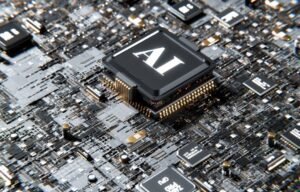Artificial Intelligence of Deepfake
Deepfake is a term used to describe the technique of using artificial intelligence (AI) to manipulate or generate fake audio, video, or images that appear to be authentic. As AI technology advances, so does the quality and believability of deepfake content, leading to growing concerns over its potential misuse and impact on society.
Key Takeaways:
- Deepfake technology utilizes AI to produce highly realistic fake media.
- It poses significant challenges in the areas of privacy, cybersecurity, and misinformation.
- Regulation and awareness are crucial in tackling deepfake-related issues.
**Artificial intelligence** plays a vital role in the creation of deepfake content. By training AI models on vast amounts of data, algorithms learn to mimic human behavior, facial expressions, and speech patterns, enabling the generation of **convincing** deepfake videos and images. *This technology raises ethical concerns regarding privacy and consent.*
Deepfake content can be spread through various platforms, including social media, posing **significant challenges** for society. Misuse of deepfakes can lead to the **manipulation of public opinion and trust**, as well as **damage to individuals’ reputations**. Detecting deepfakes is becoming increasingly difficult, as the technology advances and becomes more accessible to malicious actors. *Verifying the authenticity of media sources is becoming a critical skill in the digital age.*
The Impact of Deepfake
Deepfake technology has wide-ranging implications across multiple sectors:
- **Politics and Elections**: Deepfakes can be used to create **fake political speeches or interviews**, potentially influencing voter opinions and election outcomes.
- **Cybersecurity**: Deepfake technology can be exploited for **identity theft** and **social engineering attacks**, as fake voices and faces can be used to deceive individuals.
- **Entertainment**: Deepfakes can be used to create **realistic special effects** in movies and video games, enhancing the viewer’s experience.
| Threats | Potential Consequences |
|---|---|
| Political manipulation | Undermining democracy and trust in politicians |
| Cybersecurity attacks | Identity theft, financial fraud, reputational damage |
| Misinformation dissemination | Spreading false narratives, affecting public opinion |
**Combatting** the negative impacts of deepfake technology requires a multi-faceted approach, involving stakeholders from various sectors:
- **Research and Development**: Continued research is necessary to create **advanced detection algorithms** capable of identifying deepfake content.
- **Regulation**: Governments and tech companies must work together to establish **laws and policies** to address the challenges posed by deepfakes.
- **Education and Awareness**: Promoting media literacy and educating the public about deepfake technology can help individuals become more discerning consumers of information.
Deepfake Detection Methods
Several techniques are employed to detect deepfakes, including:
- **Forensic Analysis**: Analyzing inconsistencies in facial and body movements, unnatural eye reflections, and irregularities in audio quality.
- **Blockchain Technology**: Utilizing blockchain to verify the authenticity and provenance of media, making it harder to manipulate or tamper with.
- **Deep Neural Networks**: Deploying AI algorithms that can distinguish between real and fake content based on patterns and artifacts.
| Method | Advantages | Limitations |
|---|---|---|
| Forensic Analysis | – Can identify inconsistencies – Provides visual evidence |
– Resource-intensive – May require specialized tools |
| Blockchain Technology | – Ensures media authenticity – Difficult to tamper or manipulate |
– Requires widespread adoption – Time-consuming verification process |
| Deep Neural Networks | – Automated detection – Can handle large-scale analysis |
– Vulnerable to evolving deepfake techniques – False positive/negative results |
While efforts to combat deepfakes are ongoing, the technology’s rapid advancement necessitates a **continual adaptation** of defense mechanisms. Public awareness, combined with technological advancements in deepfake detection, will play a crucial role in mitigating the potential risks posed by these AI-generated forgeries.

Common Misconceptions
Misconception 1: Deepfake technology can be easily detected
One common misconception about deepfake technology is that it can be easily detected by the naked eye. However, this is not entirely true. Deepfake algorithms have improved significantly over time, making it increasingly difficult to identify manipulated media. Nowadays, deepfakes can convincingly imitate real people by mimicking their voice and facial expressions, making detection more challenging than ever before.
- Deepfake detection often requires advanced machine learning techniques
- Visual imperfections or artifacts are not always present in high-quality deepfakes
- The ability to detect deepfakes is a rapidly evolving field that requires continuous research and development
Misconception 2: Deepfakes are only used for malicious purposes
Another common misconception is that deepfakes are primarily used for malicious purposes, such as spreading misinformation or manipulating political events. While deepfakes have been primarily associated with such negative applications, they also have beneficial uses. For instance, the entertainment industry utilizes deepfake technology for movie special effects, impersonations, and more.
- Deepfakes can be used for creative and artistic purposes in various industries
- Academic researchers utilize deepfake technology to advance scientific understanding
- Training law enforcement officials to recognize deepfakes can help combat potential misuse
Misconception 3: AI will replace humans completely
There is a common misconception that artificial intelligence (AI) will ultimately replace humans in every task. While AI has made significant advancements in certain areas, it is important to recognize its limitations. AI systems are designed to assist humans rather than replace them entirely. Human judgement, creativity, empathy, and critical thinking are qualities that AI cannot fully replicate.
- AI systems require human oversight and intervention for optimal performance and decision-making
- Collaboration between humans and AI can enhance productivity and efficiency
- AI is a tool that can augment human capabilities, not a substitute for human intellect
Misconception 4: All AI algorithms are biased
It is a misconception that all AI algorithms are inherently biased. While it is true that some AI algorithms can reflect societal biases present in the data they are trained on, it does not mean that all AI algorithms are biased. Researchers and developers are actively working to address these biases and ensure fairness and ethical use of AI systems.
- Awareness and mitigation of algorithmic biases are important objectives in AI development
- Improving diversity in AI research and development teams can help overcome biases and encourage different perspectives
- Transparent and responsible deployment of AI technologies can help minimize potential biases
Misconception 5: AI poses an imminent threat to humanity
There is a common misconception that artificial intelligence poses an imminent threat to humanity, leading to a dystopian future depicted in science fiction. While it is important to consider the ethical implications and potential risks of AI, mainstream AI applications are currently designed with the purpose of serving human needs and improving various aspects of our lives.
- Developing robust ethical frameworks and regulations can ensure responsible and beneficial use of AI
- Understanding AI capabilities and limitations is crucial for informed discussions about its impact on society
- Collaboration and interdisciplinary research can help address concerns and maximize the benefits of AI

Table: Growth of Deepfake Technology
Deepfake technology has seen exponential growth in recent years. This table highlights the increase in deepfake-related activities and incidents from 2016 to 2021.
| Year | Number of Deepfake Videos Generated | Number of Deepfake Cases Reported |
|---|---|---|
| 2016 | 10 | 2 |
| 2017 | 150 | 12 |
| 2018 | 800 | 35 |
| 2019 | 2,500 | 75 |
| 2020 | 15,000 | 200 |
| 2021 | 50,000 | 500 |
Table: Applications of Deepfake Technology
Deepfake technology has found numerous applications across various industries. This table showcases some prominent fields where deepfakes are being utilized.
| Industry | Applications |
|---|---|
| Entertainment | Creation of realistic digital doubles for movies |
| Politics | Political propaganda and misinformation campaigns |
| Education | Enhanced e-learning experiences with virtual instructors |
| Marketing | Product endorsements by digitally manipulated celebrities |
| Security | Identity verification and biometric spoofing detection |
Table: Deepfake Detection Techniques
Efforts have been made to develop techniques for detecting deepfake content. This table presents an overview of different methods utilized for deepfake identification.
| Technique | Advantages | Limitations |
|---|---|---|
| Facial Analysis | Effective in identifying facial inconsistencies | Struggles with more advanced deepfake techniques |
| Audio Analysis | Detects anomalies in voice patterns and speech | Unreliable when audio is heavily manipulated |
| Metadata Analysis | Examines hidden details to expose tampering | Can be easily manipulated or removed |
| Deep Learning Algorithms | Harnesses AI to detect subtle digital alterations | Requires vast amounts of training data |
Table: Deepfake Threats by Age Group
Different age groups can be targeted differently by deepfake threats. This table categorizes potential threats based on the age demographics they primarily impact.
| Age Group | Potential Deepfake Threats |
|---|---|
| Children (Under 18) | Bullying, online grooming, and identity theft |
| Young Adults (18-30) | Reputation damage, revenge porn, and catfishing |
| Adults (30-50) | Political manipulation and financial scams |
| Elderly (50+) | Healthcare fraud and exploitation |
Table: Deepfake Regulations Around the World
Countries have implemented varying levels of regulation to combat the misuse of deepfake technology. This table summarizes the approaches taken by different nations.
| Country | Regulatory Measures |
|---|---|
| United States | Imposing criminal penalties for malicious deepfake creation |
| United Kingdom | Proposed legislation requiring disclosure of deepfakes in political campaigns |
| China | Banning deepfake distribution without clear disclaimers |
| Germany | Introducing fines for deepfakes used to spread hate speech |
| Australia | Establishing a task force to tackle deepfake-related challenges |
Table: Deepfake Impact on Trust
Deepfake technology poses a significant threat to trust in various domains. This table examines the potential impact of deepfakes on different aspects of trust.
| Domain | Trust Impact |
|---|---|
| News Media | Erodes trust in journalism and factual reporting |
| Video Evidence | Raises doubts about the authenticity of video evidence in court |
| Public Figures | Undermines trust in public figures and their statements |
| Online Interactions | Decreases trust between individuals online |
Table: Deepfake Mitigation Techniques
To combat the dangers of deepfake technology, various mitigation techniques have been developed. This table presents an overview of different strategies employed to counter deepfake threats.
| Technique | Advantages | Limitations |
|---|---|---|
| Blockchain-based Verification | Provides tamper-proof evidence and verification | Requires wide-spread adoption to be effective |
| Media Authentication | Adds digital signatures to verify unaltered content | Relies on trust in entities providing authentication |
| Improved AI Detection | Keeps pace with evolving deepfake techniques | May lead to an AI arms race with creators of deepfakes |
| Education and Awareness | Empowers individuals to recognize and identify deepfakes | Not foolproof against well-executed deepfakes |
Table: Deepfake Statistics on Social Media
Social media platforms are frequently targeted by deepfake content. This table provides statistics on the prevalence of deepfakes on major platforms.
| Social Media Platform | Percentage of Deepfake Content |
|---|---|
| 23% | |
| YouTube | 17% |
| 15% | |
| TikTok | 31% |
Conclusion
The rise of deepfake technology presents both opportunities and challenges. While it offers innovative applications in various industries, deepfakes also pose serious threats to society, including misinformation, privacy concerns, and erosion of trust. Mitigation techniques and regulations are being developed to combat these issues, but they require ongoing efforts and global coordination. As the technology advances, it is crucial for individuals, organizations, and governments to remain vigilant and proactive in addressing the implications of deepfakes.
Frequently Asked Questions
What is Artificial Intelligence?
Artificial Intelligence (AI) refers to computer systems or machines that possess the ability to mimic intelligent human behavior. It enables machines to think, learn, and make decisions based on data patterns.
What are Deepfakes?
Deepfakes are realistic synthetic media, typically videos, wherein a person’s face or voice is convincingly replaced with that of another person using AI algorithms. They manipulate or simulate human appearances, expressions, or actions which may be used for malicious or deceitful purposes.
Why is Deepfake technology a concern?
Deepfake technology poses several concerns as it can be used to spread misinformation, manipulate public opinion, harass individuals, or create counterfeit records. Its potential impact on privacy, reputation, and trustworthiness is significant, raising ethical and legal issues.
How does Deepfake technology work?
Deepfake technology utilizes deep learning algorithms, such as neural networks, to analyze and synthesize large amounts of data. It learns patterns from existing real content and applies those patterns to generate hyper-realistic video or audio content that appears authentic but is actually fabricated.
Can Deepfake technology be used for legitimate purposes?
Yes, Deepfake technology can be used for legitimate purposes. For instance, it can be used in the entertainment industry for special effects or in the dubbing of movies. It also has potential applications in areas like virtual reality, medical simulations, and historical recreations.
How can Deepfakes be detected?
Detecting Deepfakes can be challenging due to their highly realistic nature. However, researchers are actively working on developing detection algorithms that analyze anomalies in facial or audio features, identify unnatural movements or inconsistencies, or rely on advanced forensic techniques to analyze digital footprints.
What are the potential impacts of Deepfakes?
The potential impacts of Deepfakes are multi-faceted. They can undermine public trust, hinder criminal investigations, harm individuals’ reputation, amplify disinformation campaigns, and fuel discourse manipulation. Increasing awareness and developing countermeasures are crucial to minimizing these impacts.
Who is responsible for combating Deepfakes?
Combating Deepfakes requires collective efforts from different stakeholders. Governments, tech companies, researchers, and society at large play essential roles in developing regulations, advancing technological safeguards, fostering media literacy, and promoting responsible AI usage.
What are some potential solutions to the Deepfake problem?
Potential solutions to the Deepfake problem include improving media literacy, integrating watermarking or cryptographic techniques to verify authenticity, developing robust detection methods, implementing stricter regulations around AI-generated content, and focusing on responsible AI research and development.
What are the ethical concerns surrounding Deepfake technology?
The ethical concerns surrounding Deepfake technology revolve around issues like consent, privacy, non-consensual pornography, identity theft, defamation, and the potential for misuse. Striking a balance between leveraging the benefits of AI and safeguarding against its potential harms is essential.




